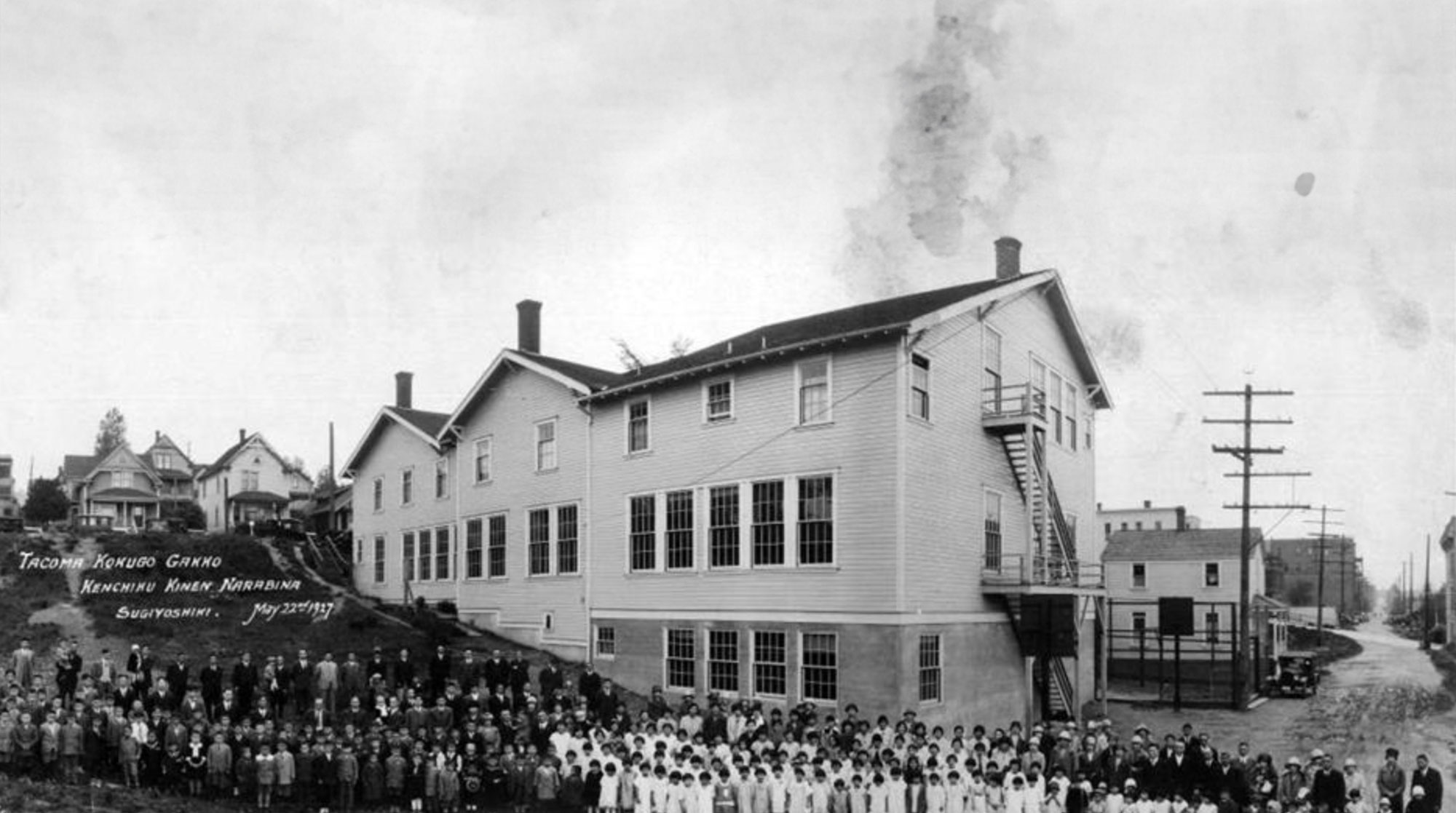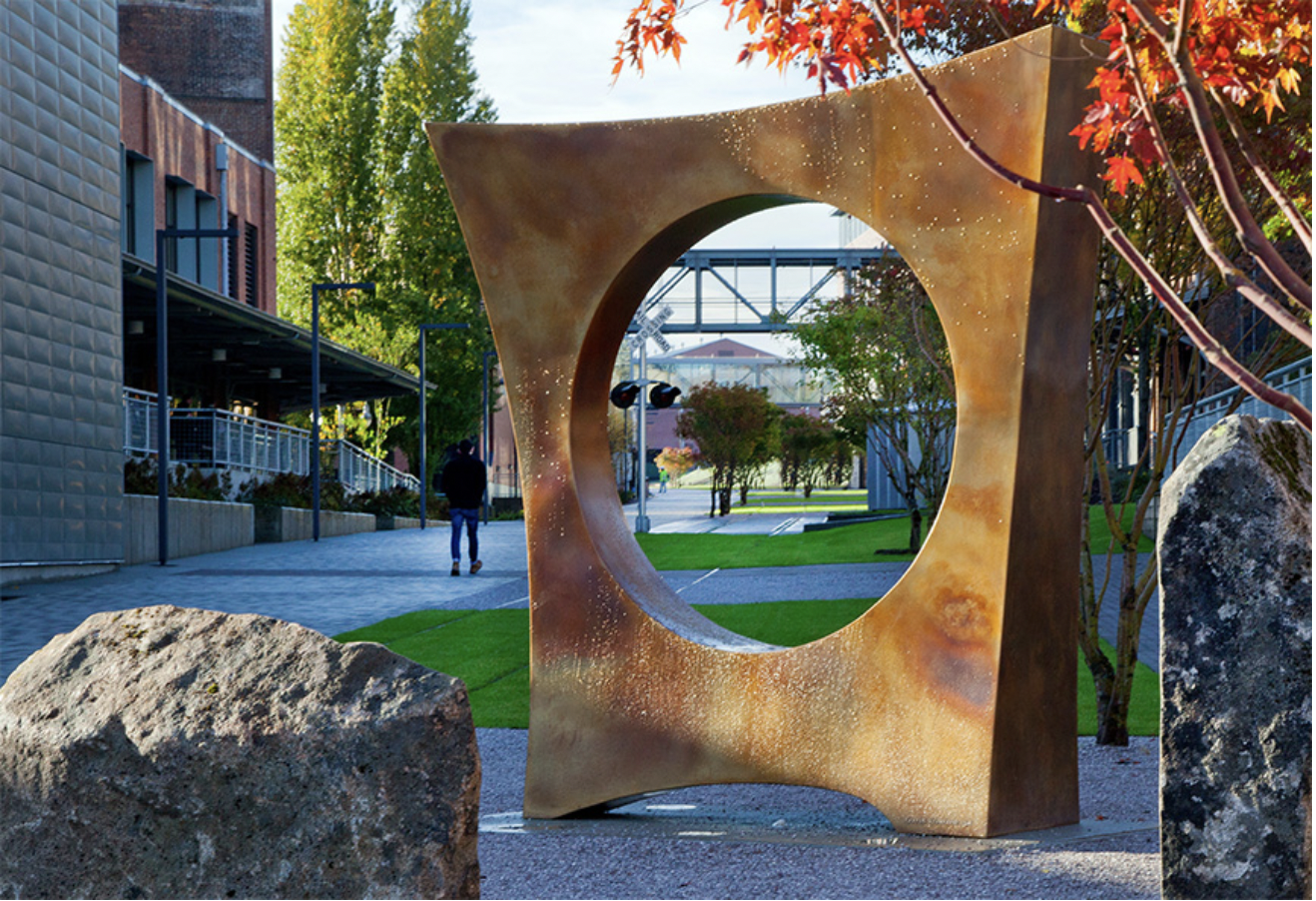Invisible history: Undoing the erasure of Tacoma’s Japantown

In this 1927 photo, school children and faculty stand outside the Japanese Language School in Tacoma. It occupied land that today is home to the UW Tacoma campus.
In the 1880s, about a decade after it the city was founded, the first Japanese settlers moved into Tacoma. Many had come to work on railroads and in the mills, others to start small businesses. Before long, they had built a neighborhood and business district on a hillside not far from Commencement Bay. It was a vibrant place with hotels, grocery stories, barbers, laundries, a newspaper and a school where children could learn Japanese language, culture and history.
“At one time, up to 180 businesses were operated by Japanese Americans in Tacoma,” says Tamiko Nimura, ’00, ’04. She is a writer and historian researching the history of Japanese Americans in the city and expanding on the work of UW Tacoma professors Lisa Hoffman and Mary Hanneman, who wrote “Becoming Nisei,” about the city’s Japantown before World War II.
“Learning about the original site of Uwajimaya blew me away,” she says, referring to the iconic family run grocery chain that is now headquartered in Seattle. She was inspired to work with her husband, Joshua Parmenter, ’02, ’05, to develop a smartphone app called “Tacoma Japantown Walking Tour.”
Part of the UW Tacoma campus was home to the Nihongo Gakka (Japanese Language School), where the community’s children went every day between grade school and dinner.
Today, little is left of Japantown. In 1942, the residents were forced en masse into internment camps. The school became a registration center and a place where families left their belongings.
Over the decades, the building fell into disrepair. Attempts were made to save it, and it was nominated to the National Historic Registry. But its days were already numbered when the UW bought the property in 1993. At that point, the structure was deemed to be beyond repair. Before it was demolished in 2004, it was one of the last two remaining Japanese language schools on the West Coast, where there had once been well over 200.

A bronze sculpture titled “Maru” (circle) by Gerard Tsutakawa commemorates the school.
Nimura learned some of this history in 2014 while attending a dedication for “Maru” (which means circle), a 9-foot-tall sculpture on the Tacoma campus that commemorates the school and the Japanese community. Nimura was inspired to help.
Her latest project is a digital exhibit of stories, photographs and details of the Japantown that once was. “One of my priorities is to uplift the voices of folks who grew up here,” she says. With funding from a UW Tacoma federal grant and private donations, she continues to “gather and share as much information as I have and know about the history of Tacoma’s Japantown,” she says. “The mission is to make sure we don’t lose sight of how important this community was.”
The online exhibit, with photos, oral histories, maps and interactive story maps, will be open to the public later this fall.